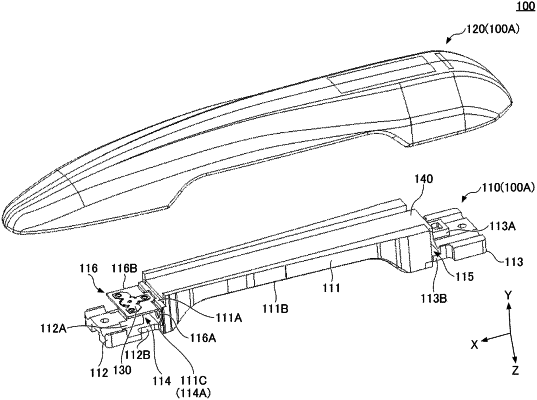| CPC E05B 81/77 (2013.01) [E05B 81/56 (2013.01); E05B 85/10 (2013.01)] | 12 Claims |

|
1. A door handle to be attached to a door, the door handle comprising:
an outer case;
an inner case integrated with the outer case; and
a pressure detector configured to detect pressure applied to the inner case,
wherein the inner case includes a recess in proximity to an end portion in a longitudinal direction,
the pressure detector detects a displacement of a first inner wall surface on a horizontal center portion side of the inner case in the recess, caused by the pressure applied to the inner case,
the pressure detector includes both a base portion directly or indirectly fixed to the first inner wall surface and a pillar portion protruding from the base portion, and detects distortion of the base portion, caused by a load applied to the pillar portion due to the displacement of the first inner wall surface,
the pressure detector is disposed in the inner case so as to face a holding portion provided closer to the end portion than the recess such that the pillar portion faces the holding portion side,
the base portion is fixed to the first inner wall surface through a fixing member,
a tip of the pillar portion is held by the holding portion, and
the pillar portion causes distortion in the base portion upon application of a load by the holding portion to the pillar portion due to the displacement of the first inner wall surface.
|